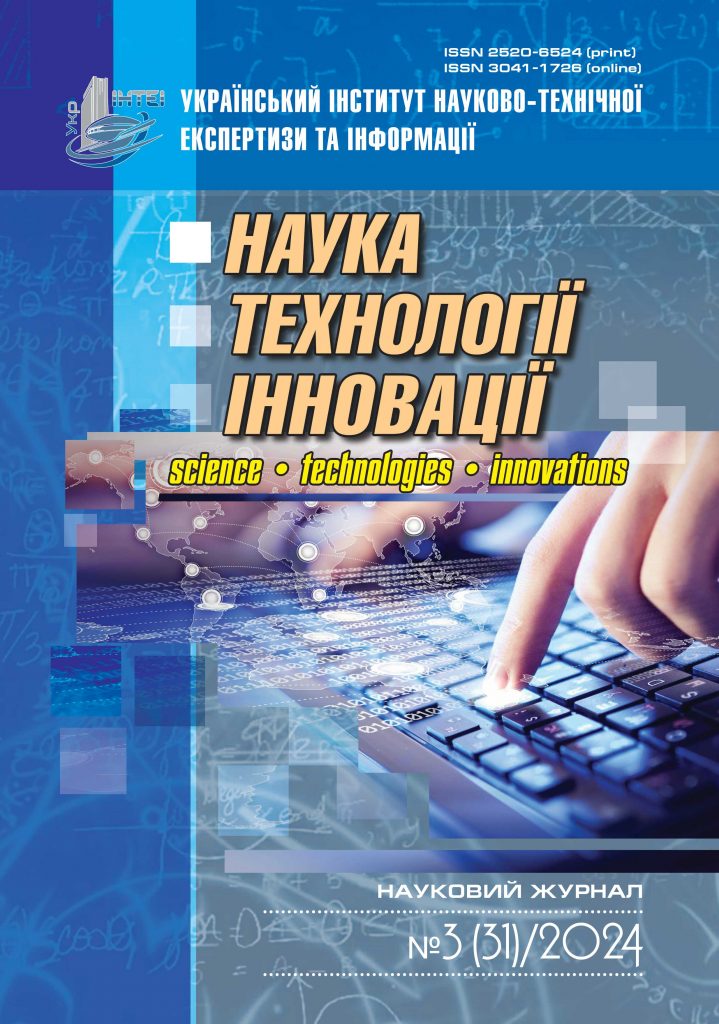
CONTENTS
INNOVATIVE ECONOMY
Paladchenko O.F., Molchanova I.V. Monitoring the implementation of national priorities for innovation activities in 2023 and the results — 3–14 ![]() PDF
PDF
Shukurov О.S. The impact of human capital and technology in business on the innovation economy — 15–26 ![]() PDF
PDF
Tereshchenko T.V. Regional economy and various models of its development: the role of personality in science — 26–34 ![]() PDF
PDF
THE DEVELOPMENT OF A NATIONAL INNOVATION SYSTEM
Sharlovych Z.P, Mykhalchenkova O.Ye., Moshenets N.S. Cross-border cooperation as a component of the modern concept of international territorial partnership — 35–40 ![]() PDF
PDF
Hornostai N.I. Regulatory framework for cross-border cooperation in ukraine — 41–48 ![]() PDF
PDF
Ihnatsevych S.P. History of ukraine’s participation in bilateral scientific and technical cooperation projects: transformation processes and geopolitical challenges — 48–57 ![]() PDF
PDF
INTELLECTUAL PROPERTY
Androshchuk H.O. Review of China’s unfair competition law: impact on intellectual property — 58–70 ![]() PDF
PDF
PROBLEMS OF SCIENTIFIC AND TECHNOLOGICAL ACTIVITIES
Balanchuk I.S. Digital transformation and COVID-19: experience and prospects for the development of “society 5.0” in japan. analysis of the situation in Ukraine — 71–82 ![]() PDF
PDF
INFORMATIONAL TECHNOLOGIES
Bobarchuk О.А., Matviichuk-Yudina O.V., Kokorovets M.O. Application areas of artificial intelligence in publishing activities — 83–91 ![]() PDF
PDF
Yevsyeyev O.S., Hrabovskyi Ye.M. Creation of content for interactive multimedia projects based on the application of artificial intelligence — 91–98 ![]() PDF
PDF
Savchuk L.M., Lozovska L.I., Udachyna K.O., Savchuk R.V. Development of an information system for integral rating assessment of investment attractiveness of an enterprise — 98–106 ![]() PDF
PDF
Diviziniuk M.M., Farrakhov O.V., Martseva L.A., Kotsiubynskyi A.O., Vlasenko O.V. Analysis of scenarios of the use of unmanned aircraft against critical infrastructure objects — 107–114 ![]() PDF
PDF
Isaienkov Ya.O., Mokin O.B. Method for evaluating partially generated data — 114–126 ![]() PDF
PDF

